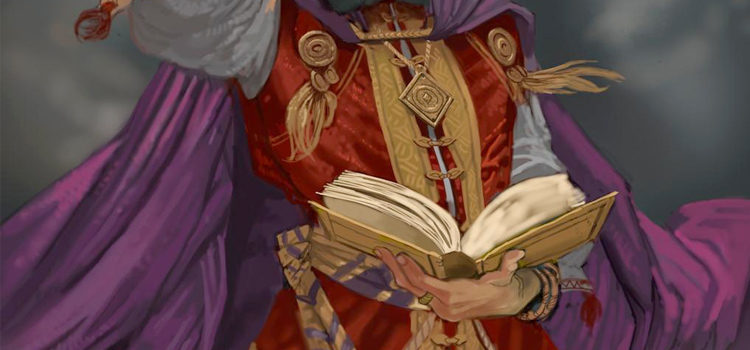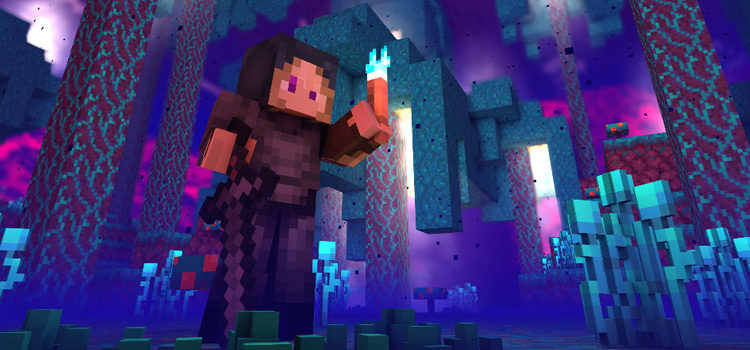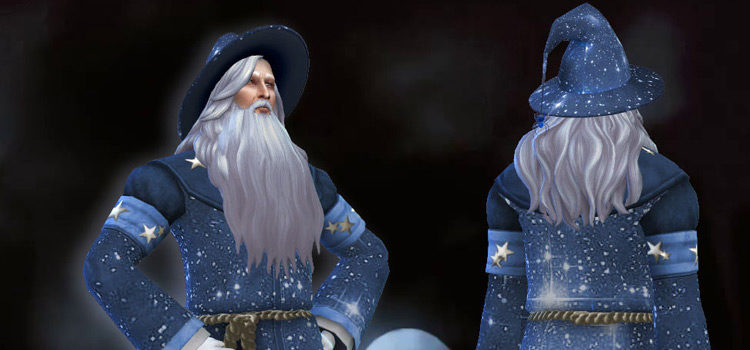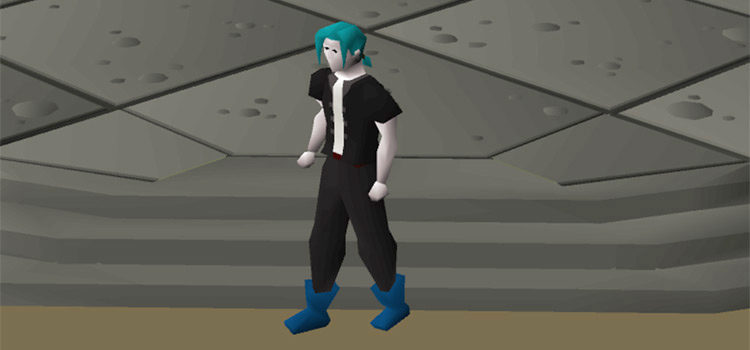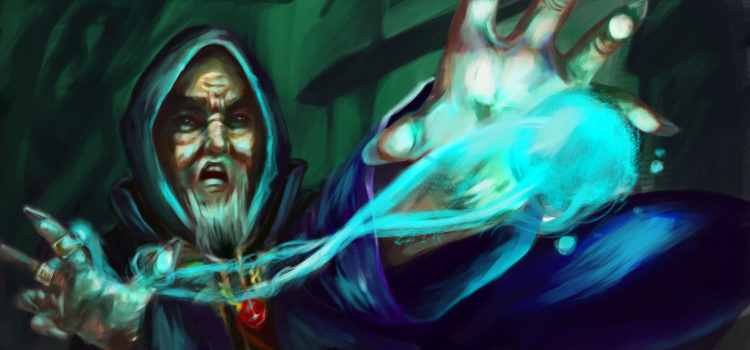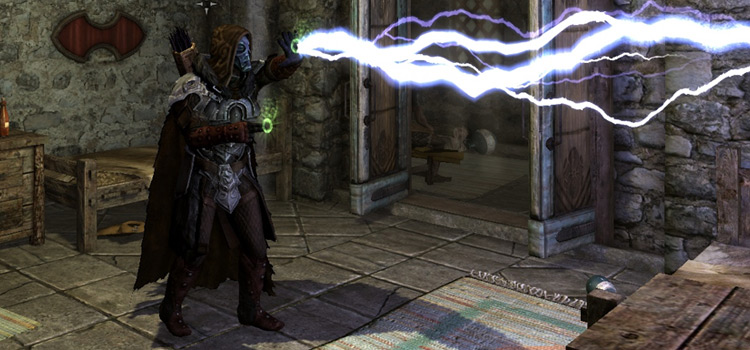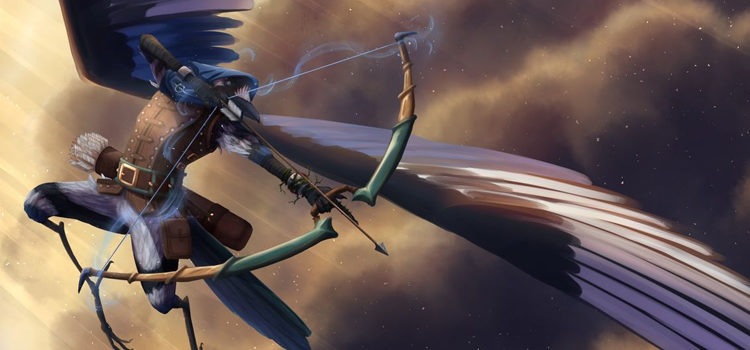Top 20 Best Wizard Spells For D&D 5e (Ranked)
This post may contain affiliate links. If you buy something we may get a small commission at no extra cost to you. (Learn more).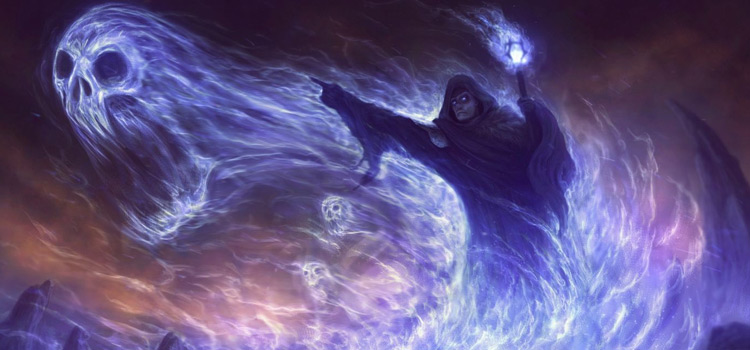
Wizards are scholarly magic users that pluck at the strings of the arcane through constant study and practice.
The result of their hunger for knowledge allows them to mind control, bring forth planar beings, shoot flames, and other magical means that benefit them.
And spells define a wizard.
They acquire spells through experimentation, other wizards, ancient tomes, or ancient creatures by recording them in their spellbooks.
Unlike Bards and Sorcerers, Wizards have a wide selection of spells available to the class, as long as they have spell slots for them. Wizards need to prepare their spells ahead of time which requires foresight.
This is why they’re considered to be the “Swiss Army Knife” of D&D, as they can prep for any situation.
I tried to focus on utility and versatility on this list, as well as some powerful spells. Enjoy!
Note: I arranged this list according to the level of the spells as well. Make sure you always have a damage cantrip ready to maximize your damage.
20. Prestidigitation
Source: Player’s Handbook
Prestidigitation is a staple cantrip among spell casters.
Using this cantrip allows you to create harmless sensory effects like sparks, musical notes, or an odd odor.
It can also light or extinguish a small flame, clean or soil an object, adjust temperatures, change flavors, or create a small trinket that can fit in your hand.
This means you can warm your bedroll any time. Or play music when camping. Or maybe make knocking noises to distract a guard, or make a poison taste and smell good.
There’s not a whole lot Prestidigtation can’t do, with a little creativity.
19. Find Familiar
Source: Player’s Handbook
Being a 1st level spell, Find Familiar scales well into later campaigns.
It allows you to have an arcane entity (Fey, Fiend, or Celestial) serve you in the form of a beast.
You and your familiar have a telepathic bond. So as long as your familiar isn’t too far away, you can see through its eyes and listen through its ears.
Channelling your senses into your familiar, you also gain its senses like a bat’s blindsight or an owl’s darkvision.
You could turn your familiar into a raven to send a message, or an octopus to grab treasure deep underwater.
18. Mage Armor
Source: Player’s Handbook
A popular spell on the 1st level spell list, Mage Armor protects a willing unarmored target by surrounding them with a magical force, turning their base AC to 13 + Dexterity modifier.
Mage Armor’s duration is 8 hours and the spell ends once the target puts on armor.
Although they can still use a shield while under the spell’s effect.
This spell is handy when you’re ambushed and don’t have time to prepare. You may also use this to protect the more vulnerable members of your party, like the barbarian who insists on fighting naked.
17. Shield
Source: Player’s Handbook
Shield is a fantastic 1st level spell that creates a magical shield to protect you.
It’s a reaction, so you can choose whether to use it after an enemy makes an attack roll against you. And it lasts until your next turn.
It gives you +5 AC which can surprise enemies when they think you’re an easy target. Just note, your decision to use your Shield spell has to be done before your DM rolls for damage.
Shield is a life saver at forcing enemies to have to deal with your higher AC, and also makes you immune to magic missile.
This makes Shield especially useful when you want to maintain a spell that requires concentration.
16. Invisibility
Source: Player’s Handbook
Now this 2nd level spell is incredibly fun, and your rogue will always thank you for the free sneak attacks.
Invisibility is simple: it turns a creature you touch invisible.
This spell is great for sneaking in or out of somewhere, any time of day. Take note that you can still be heard when invisible, so keep that in mind!
15. Fly
Source: Player’s Handbook
Fly is a great utility spell.
It’s a 3rd level spell that allows your wizard to target a willing creature and grants them the ability to fly for 10 minutes.
Fly makes you to look and use terrain in three dimensions.
This also lets you bypass troublesome enemies and allows your fighter to engage flying enemies.
You could still be vulnerable to projectiles, but it’s a lot better than a great axe to the face.
If your party barbarian thinks they’re scary, wait until you cast fly on them. A barbarian charging towards an enemy at 60 feet per round in the air is a nightmare!
14. Counterspell
Source: Player’s Handbook
Any seasoned Wizard has at least one story where Counterspell saved their party from total disaster.
This 3rd level spell isn’t as flashy as the rest. But it can change a deadly encounter into a mild annoyance.
Counterspell allows you to interrupt a creature’s spell casting as a reaction.
If you Counterspell a level 3 or lower level spell, the spell takes no effect.
If you Counterspell a level 4 or higher level spell, you have to bypass the spell’s DC with a spellcasting ability check for it to be interrupted.
13. Fireball
Source: Player’s Handbook
If a Wizard had to choose only one spell, I think Fireball would likely be it.
Fireball is a 3rd level spell iconic to D&D for as long it’s been around.
You point your finger in a direction and make a 20 feet explosion. Every creature in the area of effect must make a Dexterity saving throw or take full damage.
While fire resistance is built into a lot of D&D monsters, the amount of damage output (and range you get) from Fireball easily makes up for it.
Not to mention, explosions are just awesome.
12. Haste
Source: Player’s Handbook
Haste is mostly beneficial to the rest of the party. But still really valuable.
Haste is a 3rd level spell that doubles a creature’s movement speed, grants them +2 AC and grants them an additional action on their turn.
This means more attacks turning your party into a chainsaw. A must-have for any party, as you’ll almost always have a melee fighter.
11. Polymorph
Source: Player’s Handbook
This is a mainstay for every Wizard because of its extreme versatility.
It can render a target useless, save and empower an ally, and has plenty of utility.
Polymorph is a classic 4th level spell allowing a Wizard to turn any creature into a beast of the same challenge rating (or level) or lower.
This means you can turn a target into a harmless frog for an hour. Or turn an ally into a powerful T-Rex to wreak havoc.
The creature may retain their personality and alignment. But they’ll now have the stats and health of the new beast. This means that as long as your ally is above 0 Hit Points, you can turn them into a T-Rex giving them 136 Hit Points in a pinch.
And you can have a T-Rex on your side.
10. Sickening Radiance
Source: Xanathar’s Guide to Everything
A Wizard has a lot of potentially game-breaking abilities.
Sickening Radiance is one of them.
A 4th level spell which may look uninteresting at first, but if used correctly, can take down powerful foes.
Sickening Radiance creates a 30-foot sphere of green light for 10 minutes. If a creature inside it fails a Constitution saving throw, they take 4d10 radiant damage, emit a green dim light, and brings them down by one exhaustion level.
A thing to note about exhaustion is that there are 6 levels of it, and once a creature is at the lowest level of exhaustion, they die.
To add to that, the more exhausted a creature is, the bigger the disadvantage they have with ability checks.
Trap the creature in the area of effect and if they fail their Constitution save 5 times, it’s over. If the creature stays in the area of effect for the entire 10 minutes, they have to make 100 saving throws just to stay alive.
Easily one of the most brutal spells if set up properly.
9. Animate Objects
Source: Player’s Handbook
Animate Objects has become a favored spell.
This 5th level spell lets you command objects nearby that aren’t worn or being carried by others.
You can control up to ten non-magical objects, depending on its size with its own Health, AC, Strength, and Dexterity.
Animate Objects could be used to animate gold coins to rip apart an enemy. It could come in handy when your party doesn’t have their weapons, and all you’ve got are rocks and sticks.
You could also command a boulder to block or unblock a passage way.
8. Wall of Force
Source: Player’s Handbook
Don’t underestimate Wall of Force. It’s an extremely useful 5th level spell.
With it, you can make a magical wall, dome, or sphere.
The basic strategy of this spell would be to wall off half of the enemies, so you only have to deal with the other half. Casting the wall on an occupied area lets you push creatures to either side.
Physical and Ethereal creatures and objects can’t go through Wall of Force, either.
7. Contingency
Source: Player’s Handbook
Contingency is a 6th level spell that rewards the prepared.
Contingency lets you to use a 5th level spell (or lower) available to you, which you can target yourself with.
The spell activates when a circumstance that you describe, actually occurs. Literally a “contingency” on a D&D campaign.
If you’re worried about a situation your character might end up in, you can now prepare an answer for that.
A great spell to have under Contingency is Dispel Magic, just in case you succumb to magic that can incapacitate you.
6. Mass Suggestion
Source: Player’s Handbook
Mass Suggestion will give you the ability to undo potential combat encounters by simply suggesting potential enemies to go out of town and enjoy a night of campfire songs.
Mass Suggestion is a 6th level spell that lasts up to 24 hours, and can target up to 12 creatures.
This could also turn a horrible social interaction at a feast, or a council meeting, just by Mass Suggesting the room into agreeing with you.
The spell ends when you give your targets suicidal commands. Dark, I know.
5. Forcecage
Source: Player’s Handbook
One of the most effective 7th level spells is Forcecage.
This creates a magical, immobile, invisible, cubed cage that entraps any creature within the cage’s area (10ft x 10ft).
The only way to escape Forcecage is by magical means, but only if they succeed a saving throw.
This spell could be used in combination with other spells with deadly effect. A few examples are Sickening Radiance, Cloud Kill, and other spells that would benefit from an immobilized enemy.
4. Simulacrum
Source: Player’s Handbook
At the 7th level spell range, spells start to get very strong and Simulacrum is particularly powerful.
This allows you to make a duplicate of a beast or humanoid from snow. That means you could copy yourself or someone else, which opens up a lot of roleplay opportunities.
The duplicate only has half the health of the original and no equipment. But it bears all the stats of the original.
This also means they can cast the same spells the original can. The duplicate will be under your command, but lacks the ability to learn or become more powerful.
Still, Simulacrum can be potentially game breaking by making duplicates of the duplicates of the spell caster. But you should ask your DM if they’ll allow it.
3. Feeblemind
Source: Player’s Handbook
Render a powerful Wizard or Sorcerer useless with the 8th level spell.
Feeblemind inflicts a small amount of psychic damage at 4d6, but requires an Intelligence saving throw.
If the target fails the saving throw, their Charisma and Intelligence plummets to 1. Making them unable to use magic items, cast spells, understand language, or communicate.
However, they can still identify friend from foe and even protect them.
The beautiful thing about Feeblemind is that the creature can only make Intelligence saving throws every 30 days.
2. Maze
Source: Player’s Handbook
When a Wizard gets access to 8th level spells, Maze is an easy first pick.
You point at an enemy and banish them into a demiplane maze with no saving throw.
The banished creature stays in the maze until the spell runs out, or until they are able to escape with a DC 20 Intelligence check.
Maze is still viable when banishing opponents with legendary resistances because forcing them to spend their action to escape the maze takes them out of the fight for at least a round.
1. Wish
Source: Player’s Handbook
Easily the most powerful spell available to any wizard, Wish is the 9th level spell to have.
There’s a lot to Wish, so you want to be careful when you gain access to it.
The basics of Wish is that it can duplicate the effects of any 8th level spell or lower, without having to spend for its components.
You may create any non-magical object that costs up to 25,000gp in value, and it can be no larger than 300 feet. You could fully heal up to twenty creatures as well as removing any effects that greater restoration can remove.
But wait, there’s more: you can give up to ten creatures resistance to a certain damage type, or make them immune to a particular spell for up to 8 hours.
You could also use Wish to do crazy things like stop a Tarasque’s regeneration.
There is a lot to this spell and with great power comes great responsibility. So definitely approach with caution.
